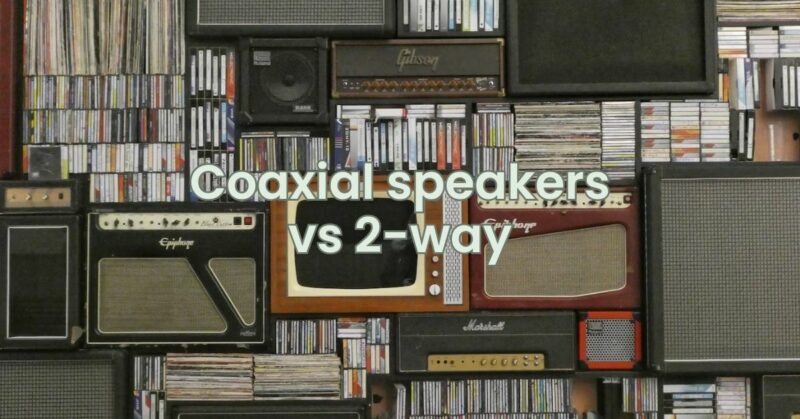When it comes to speaker designs, coaxial speakers and 2-way speakers are popular choices that offer different approaches to sound reproduction. Coaxial speakers feature a concentric driver arrangement, while 2-way speakers utilize separate drivers for different frequency ranges. Understanding the differences between coaxial and 2-way speakers is important when making informed decisions about audio setups. In this article, we will compare coaxial speakers and 2-way speakers, examining their respective benefits, limitations, and the scenarios in which each design excels.
- Coaxial Speakers:
- Defining coaxial speakers and their unique driver arrangement.
- Explaining the concentric design of coaxial speakers, with the tweeter mounted at the center of the woofer.
- The advantages of coaxial speakers in terms of improved sound dispersion and precise sound imaging.
- 2-Way Speakers:
- Defining 2-way speakers and their driver configuration.
- Explaining the separation of drivers for different frequency ranges: a woofer for low frequencies and a tweeter for high frequencies.
- The benefits of driver separation in 2-way speakers for precise frequency response and driver specialization.
- Sound Quality and Imaging:
- Discussing the impact of coaxial speaker design on sound imaging and staging.
- Exploring the benefits of coaxial speakers in achieving a coherent and integrated sound image.
- The ability of coaxial speakers to provide a focused and accurate soundstage.
- Frequency Response and Driver Integration:
- Analyzing the frequency response capabilities of coaxial and 2-way speakers.
- Understanding the advantages of driver separation in 2-way speakers for better frequency handling and driver integration.
- Limitations of coaxial speakers in reproducing extreme high and low frequencies compared to 2-way speakers.
- Sound Dispersion and Wide Coverage:
- Discussing the wide dispersion characteristics of coaxial speakers.
- Exploring how coaxial designs provide a broader sweet spot and even sound coverage.
- The potential limitations of 2-way speakers in achieving wide sound dispersion compared to coaxial speakers.
- Complexity and Cost:
- Considering the complexity and cost factors associated with each speaker design.
- Discussing the simplicity of coaxial speakers and their potential cost-effectiveness.
- Recognizing the additional components and crossover networks in 2-way speakers that may increase complexity and cost.
- Application Considerations:
- Exploring the suitable applications for coaxial speakers, such as car audio and home audio systems.
- Discussing the specific uses of 2-way speakers in various scenarios, such as studio monitoring and home theater setups.
- Considering the specific audio requirements and intended applications when choosing between coaxial and 2-way speakers.
Conclusion: Coaxial speakers and 2-way speakers offer distinct approaches to sound reproduction, with different benefits and limitations. Coaxial speakers excel in sound imaging, wide dispersion, and precise soundstage, while 2-way speakers offer improved frequency response, driver specialization, and potential for higher fidelity. The choice between coaxial and 2-way speakers depends on factors such as sound imaging requirements, frequency response needs, budget considerations, and intended applications. By understanding the characteristics of each speaker design and assessing specific audio requirements, enthusiasts can make informed decisions to create an audio setup that best suits their preferences and listening environment.


